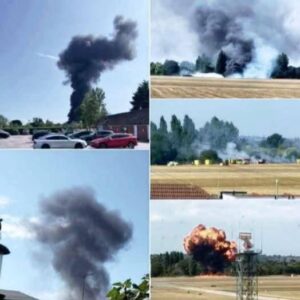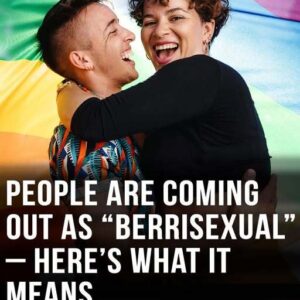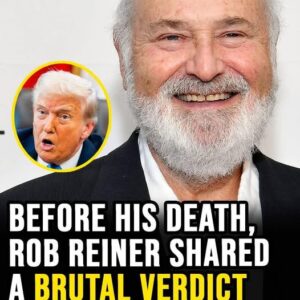In late January 2025, a major policy shift stirred debate across the United States when former U.S. President Donald Trump announced and signed a new executive order. This directive focuses on foreign students in the United States who take part in certain types of protests on college campuses.
The policy specifically addresses demonstrations perceived as promoting messages connected to organizations labeled as terrorist groups by the U.S. government. While framed by its supporters as a step to combat anti-Semitism and improve campus safety, the measure has also been criticized by free speech advocates and legal experts who worry about its broader implications.
This executive order has added fuel to an already complex national conversation about political activism, academic freedom, immigration enforcement, and the role of universities in fostering debate while maintaining safety. With the policy now in effect, universities, advocacy groups, and legal professionals are bracing for potential challenges and ripple effects that could last for years.
Background of the Executive Order
The executive order was introduced as part of a broader response to concerns about anti-Semitism in educational institutions. According to statements from Trump and his team, the intent is to ensure that campuses remain safe spaces for students of all backgrounds, particularly Jewish students who have reported feeling targeted or harassed in the wake of heated debates over Middle East conflicts.
Under the order, federal immigration agencies are directed to review the visa status of non-U.S. citizen students who participate in certain demonstrations. If an individual is determined to have actively supported an organization already on the U.S. government’s list of designated terrorist entities, their visa could be revoked, potentially leading to deportation.
One prominent example referenced in official explanations is Hamas, which has been on the U.S. State Department’s list of foreign terrorist organizations since 1997. The policy does not name only one group but applies broadly to any group on that government list.
How the Policy Works
The measure relies on existing provisions in U.S. immigration law that allow authorities to take action against individuals who are found to “endorse or espouse” designated terrorist organizations.
However, what counts as “endorsement” is not strictly defined in the order. This has raised questions among legal scholars, advocacy organizations, and even some university administrators.
Here is the general process outlined by officials:
Monitoring and Identification – Federal agencies may receive tips from the public, campus security, or other sources regarding the participation of foreign students in specific demonstrations.
Review of Evidence – Authorities would review whether the protest in question meets the criteria set out in the order, such as including messages that could be interpreted as supporting a banned group.
Immigration Action – If an individual is deemed to have crossed that line, immigration officials could revoke their student visa and begin removal proceedings.
Supporters of the policy believe this framework is necessary to prevent the spread of extremist messages and ensure campus protests remain peaceful and non-threatening. Critics, however, argue that the vague language leaves room for subjective interpretations that could unfairly target students based on political beliefs or even misinterpretations of their actions.
Supporters’ Perspective
Those in favor of the executive order argue that it sends a clear message: academic spaces should not become platforms for promoting groups that are linked to violence or threats against any community.
Proponents highlight the following points:
Protection of Jewish Communities – Supporters say Jewish students have increasingly reported feeling unsafe on some campuses, especially when protests involve rhetoric that can be interpreted as hostile toward Israel or Jewish people in general.
Maintaining Public Safety – They argue that preventing any form of support for terrorist organizations is an essential part of safeguarding the U.S., including its universities.
Deterring Extremism – By tying visa status to participation in certain protests, the policy may discourage individuals from engaging in actions that could be construed as promoting extremist ideologies.
Some commentators sympathetic to the order have suggested that foreign students, while having the right to express opinions, are guests in the country and should abide by certain limitations in line with U.S. law and security priorities.
Criticism and Concerns
Opposition to the executive order comes from a broad coalition that includes civil liberties groups, immigrant rights advocates, legal scholars, and some academic leaders.
Critics raise multiple concerns:
Freedom of Speech – They argue that the policy risks punishing students for expressing political views, even when such speech is protected under the First Amendment of the U.S. Constitution.
Vagueness of Terms – Without a clear legal definition of what constitutes “endorsement” of a banned group, students might be targeted for merely attending a protest or holding signs with certain slogans, even if they do not support violence.
Chilling Effect on Activism – There is concern that foreign students may avoid participating in any protests or discussions about international issues, fearing that their involvement could be misinterpreted.
Potential for Discrimination – Opponents warn that enforcement might disproportionately affect students from certain backgrounds or regions, leading to accusations of bias.
Some legal experts have gone further, predicting that the order could face significant constitutional challenges in court. They note that immigration law, while giving the government broad discretion, must still operate within the boundaries of constitutional rights when applied domestically.
Campus Responses and Repercussions
Even in the short time since the executive order’s announcement, the policy has already had an impact on campus life.
At Columbia University, for example, media reports indicate that an alumni group has begun discussing ways to identify and track foreign students involved in certain demonstrations. Similar conversations have been rumored at other universities, suggesting that this policy could lead to increased monitoring and reporting of student activities.
Some universities have responded cautiously, with administrators urging students to understand the legal implications of their activism. A few have issued statements emphasizing their commitment to both free expression and campus safety, while noting that they must comply with federal law.
Student reactions have been mixed. Some support the policy as a way to reduce tensions and ensure a safer campus environment. Others feel it undermines the open exchange of ideas that universities are meant to protect.
Legal Landscape and Possible Challenges
The debate surrounding the executive order is not purely academic; it is also likely to play out in courtrooms.
Constitutional scholars point out that, while the U.S. government has broad authority over immigration matters, applying immigration consequences to political expression raises tricky legal questions. Past court cases have addressed similar tensions between national security and free speech, sometimes siding with the government and sometimes with the individual.
Civil rights groups have already signaled their intention to monitor how the order is enforced and, if necessary, to challenge cases they believe involve overreach. These cases could eventually make their way to higher courts, potentially setting new legal precedents for how immigration laws intersect with political activism.
Broader Social and Political Implications
Beyond the legal and campus-specific debates, the executive order is shaping national conversations about activism, identity, and the boundaries of lawful protest.
For supporters, the measure is a firm stand against messages they see as threatening to vulnerable communities. For critics, it is a warning sign of how quickly political dissent can be reframed as a security threat.
The policy also touches on broader issues, including:
The Role of Universities in Democracy – Should academic institutions be places where all political ideas, even controversial ones, can be aired without fear of government retaliation?
Immigration Policy and Political Expression – To what extent should a person’s visa status be tied to their participation in protests?
The Balance Between Safety and Freedom – How can society protect vulnerable communities without silencing legitimate dissent?
Looking Ahead
As the executive order moves from announcement to implementation, all sides are watching closely. Supporters are eager to see whether the policy reduces what they view as dangerous rhetoric on campuses. Opponents are preparing for the possibility of legal battles that could reshape the intersection of immigration law and free speech.
University leaders are in a challenging position — they must navigate compliance with federal rules while also upholding their institutional commitments to academic freedom. Student organizations, meanwhile, are reassessing their approaches to activism, with some scaling back public demonstrations and others doubling down in defiance.
Conclusion
The January 2025 executive order signed by Donald Trump has become more than just a policy change — it is now a flashpoint in ongoing debates about immigration, security, free speech, and the role of higher education in political life.
Whether the measure ultimately survives legal scrutiny or not, its immediate effect has been to place foreign students and campus activism under an intense spotlight. In doing so, it has forced Americans to confront difficult questions about how to safeguard both safety and liberty in a deeply divided political climate.
The coming months — and perhaps years — will reveal whether this order is remembered as a necessary protective measure, a controversial overreach, or a turning point in the relationship between universities, politics, and the law.





